I know laser engraving looks clean and simple, but real risks hide in plain sight. Eyes can get hurt. Skin can burn. Fumes can irritate or harm lungs. Fires can start fast. I will show you how I handle these risks every day at Kirin Laser.
Laser engraving is not inherently dangerous when I follow strict safety rules. I protect my eyes, skin, and lungs. I avoid risky materials. I control fire. I keep my workspace ventilated. I train my team. With these steps, I make CO2 laser engraving safe and consistent.
I write this from the Kirin Laser floor and from client sites. I build, OEM, and service CO2 laser engraving machines. I see the same patterns across markets. Safety depends on routine. Safety depends on the right hardware. Safety depends on clear rules that people follow. I will connect each question to practical actions that I use and sell.
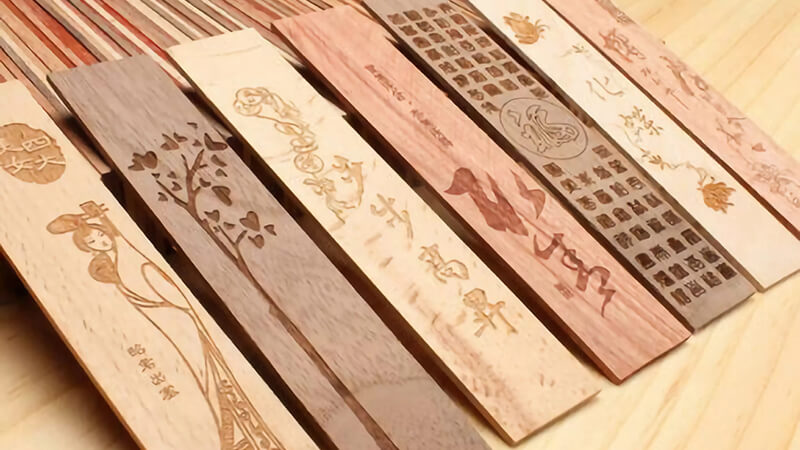
What are the hazards of laser engraving?
I see four big risks. Eye injury from direct or reflected beams. Skin burns from laser exposure or hot parts. Fumes and particulates from material breakdown. Fire from resins, dust, or trapped heat. I reduce each risk with controls that match the job.
The main hazards are eye damage, skin burns, toxic or irritating fumes, and fire. I prevent these with proper eyewear, interlocks, enclosures, fume extraction, material controls, and fire detection. A clear safety checklist and trained operators keep incidents rare and contained.
Dive deeper
I split hazards into beam, heat, air, and ignition. This simple model guides my setup and my training.
-
Beam hazards: A CO2 laser at 10.6 µm1 is invisible to the eye. The cornea absorbs it, so damage is fast and silent. Specular reflection off metal can redirect energy. I use enclosures with interlocks. I choose eyewear rated for 10.6 µm with a proper optical density. I train operators to keep covers closed, and to treat reflective objects with care.
-
Heat hazards: The beam heats edges, dust, and parts. The workpiece stays hot. So do honeycomb beds and knife blades. I add cooldown steps. I use nonflammable fixtures. I stop operators from touching parts without tweezers or heat gloves.
-
Air hazards: Materials break down into vapors and fine particles. Wood smoke can irritate lungs. PVC releases HCl and other corrosive gases, so I ban PVC. Acrylic produces monomer vapors that smell sweet and can irritate. I use high static pressure fume extractors with HEPA and activated carbon2. I seal ducts to stop leaks.
-
Ignition hazards: Fine dust and resins can ignite. Air assist reduces char and cuts flare. I add flame sensors and thermal cutoffs3. I install automatic fire suppression4 in closed beds where risk is high. I keep a CO2 extinguisher at arm’s length. I test it quarterly.
Here is how I map risk to controls in my shop:
| Hazard | Typical cause | Primary control | Secondary control |
|---|---|---|---|
| Eye injury | Open lid, reflectance | Interlocked enclosure | Certified eyewear |
| Skin burn | Hot parts, beam stray | Cooldown routine | Heat gloves, tweezers |
| Fumes | Material breakdown | HEPA + carbon extractor | Duct to outside |
| Fire | Resin, dust, heat | Flame sensor + shutdown | Auto suppression, air assist |
I share one story. A client had frequent flare-ups when they engraved resin-rich plywood. We replaced their open frame unit with our CO2 system that has lid interlocks, directed air assist, and a tuned extraction path. We also added auto suppression. Fire calls dropped to zero in three months, and uptime jumped.
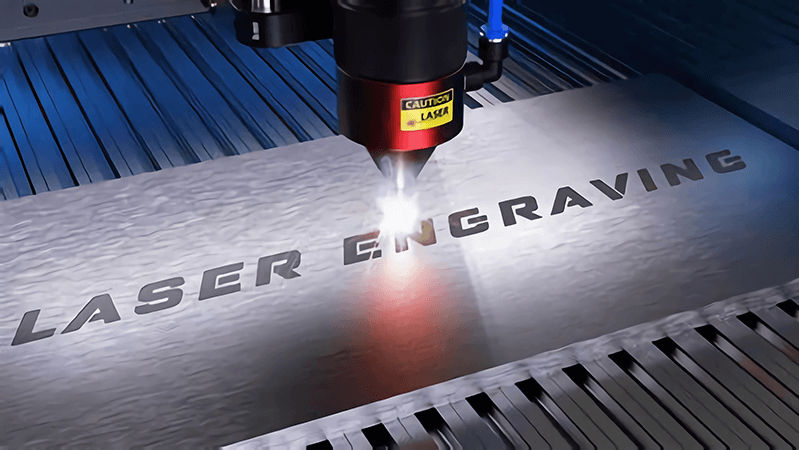
Is it safe to watch a laser engraver?
I do not watch a running CO2 laser with the lid open. I watch through a rated window or a camera. I set interlocks to stop the beam if someone lifts the cover. I never trust a bare eye near an active beam path.
It is safe to watch a CO2 engraver only through a proper interlocked enclosure window or a camera. I keep the lid closed. I use certified materials for the viewing pane. If the lid must open for setup, I disable the beam and wear correct eyewear.
Dive deeper
I design our machines so people do not need to hover. I keep monitoring safe and simple. I use these rules in my lab and in client sites.
-
Enclosed viewing5: I use a viewing window that blocks 10.6 µm. The pane has a certified rating. The frame seals the gap to stop fumes. The angle cuts reflections. I keep the pane clean to avoid glare that hides flare-ups.
-
Interlocks6: The beam shuts off when the lid opens. This is not optional. I test interlocks before each shift. I train operators to report any interlock fault at once. I keep spare switches in stock.
-
Cameras: I install a camera inside the enclosure. It sits outside the beam path and behind a protective filter. The feed shows the cut zone, the nozzle, and the bed. I do not rely on color accuracy. I watch for smoke shape and flame flicker. That is enough to catch risk.
-
Eyewear: If I must align optics with the lid open, I use the lowest test power and proper eyewear. I place beam blocks around mirrors. I put a sign on the machine that says “Alignment in progress.” No one walks behind the optics path.
-
Supervision: I do not leave a job unattended. I set a timer. I stay in the area with a clear line of sight or the camera feed on a screen. This single habit has saved more parts than any other.
Here is my simple matrix for safe viewing choices:
| Scenario | Lid status | Viewing method | PPE needed |
|---|---|---|---|
| Normal engraving | Closed | Rated window or camera | None |
| Setup, beam off | Open | Direct | Safety glasses |
| Alignment, low power | Open | Direct + beam blocks | CO2-rated eyewear |
| Troubleshoot fume path | Closed | Camera | None |
I keep the rule clear for teams. If the lid is open and the beam is on, we stop. We fix the process. We do not make exceptions.
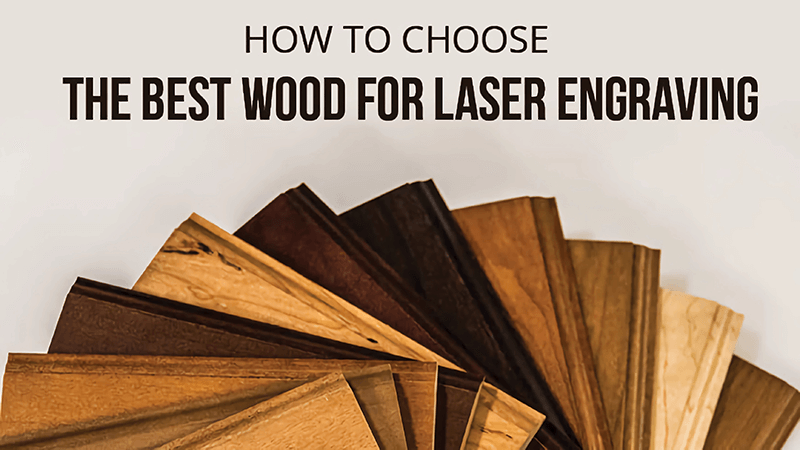
Do you need a fume extractor for laser engraving?
I always use a fume extractor on CO2 engraving jobs. It keeps the air clear. It protects lungs. It protects optics and electronics from residue. It improves cut quality. It also reduces fire risk by removing fuel.
Yes, I need a fume extractor. I pair HEPA for particulates with activated carbon for vapors. I size airflow to the machine bed size and the material load. I seal ducts, and I test capture at the source. This gives me clean air and stable quality.
Dive deeper
I match extraction to the job. I check three things: airflow, filtration media, and path design.
-
Airflow7: I size CFM to the enclosure volume and leak rate. For a desktop CO2 bed, I often aim for 250–400 CFM at the hood. For larger beds, I go 600–900 CFM. I prefer high static pressure fans, because honeycomb and small ducts add resistance. I confirm flow with an anemometer at the inlet.
-
Filtration8: I capture two classes of byproducts. Fine particulates go to a HEPA H13 or better filter. Volatile organic compounds go to activated carbon with enough dwell time. Some jobs need a prefilter stage for large dust to protect HEPA life. I track pressure drop across each stage.
-
Path design: I keep duct runs short and straight. I avoid corrugated hoses when possible. I seal joints with clamps and high-temp tape. I place the intake near the nozzle so I capture fumes at the source. I add a small makeup air path to avoid negative pressure in the room.
-
Maintenance: I log filter changes by hours and by pressure. I never wait for smell. I check for leaks with smoke pencils. I clean the honeycomb bed often to remove resin buildup. Clean beds pass more air and run cooler.
-
Safety: The extractor reduces fumes and fuel, so fires are less likely. Many clients see less flare after a proper retrofit. One client cut acrylic daily. Their shop smelled sweet and sticky. We installed a 700 CFM unit with a deeper carbon bed. The smell dropped to near zero, and lens life doubled.
Here is a quick sizing table I share:
| Bed size | Typical CFM target | Filtration stack |
|---|---|---|
| Small desktop | 250–400 | Prefilter + HEPA + Carbon |
| Mid-size | 400–700 | Prefilter + HEPA + Deep Carbon |
| Large format | 700–900+ | Prefilter + HEPA H14 + Dual Carbon |
At Kirin Laser, I offer matched extractor kits for our CO2 line. The kits include ducts, clamps, and a setup guide. This reduces install errors and speeds up compliance checks.
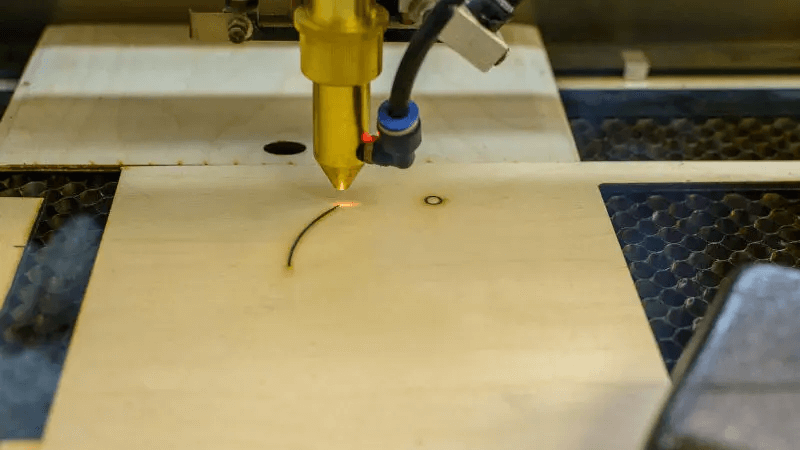
Are the fumes from laser cutting acrylic toxic?
I handle acrylic with care. The fumes can irritate eyes and lungs. The smell is strong. The vapors can deposit residue on optics. I always extract and filter. I never run acrylic in a closed room without engineered ventilation.
Acrylic fumes are not as dangerous as PVC, but they can still harm. The vapors can irritate, and long exposure is not acceptable. I use HEPA and deep activated carbon. I move air outside when needed. I keep people away from the exhaust.
Dive deeper
I break acrylic into two forms: cast and extruded. Both can release methyl methacrylate (MMA)9 and other byproducts when cut. The odor is a warning. The effect is dose-dependent. Here is how I control dose.
-
Source capture: I keep the nozzle air assist on to push fumes toward the intake. I use skirts or shields that guide air across the cut. This improves edge quality and keeps vapor out of the optics path.
-
Filtration depth: Acrylic needs more carbon than wood. I prefer deeper beds or multiple cartridges. I track smell at the outlet as an early sign of carbon saturation10. I do not wait for visible haze.
-
Vent to outside: When workloads are heavy, I route final exhaust outside. I direct it away from air inlets and people. I comply with local codes. I add backdraft dampers to stop return flow when the fan is off.
-
Process tuning: I tune speed and power to avoid overburn. Less overburn means fewer fumes and smoother edges. I keep lenses clean, because dirty optics cause hot spots that char the acrylic and make more vapor.
-
Material checks: I confirm the material is PMMA. I do not cut PVC or unknown plastics. I label shelves. I keep a small scrap test with a hot wire to identify PVC in case of doubt, but I prefer supplier docs.
-
Health policy: I set exposure rules. The operator stays near the machine, but not in the fume path11. The extractor runs a few minutes after the cut ends. People do not lean over the bed right after a job.
Here is my quick reference:
| Material | Cut OK | Fume risk | Control |
|---|---|---|---|
| PMMA acrylic | Yes | Medium | HEPA + Deep Carbon + Outside Vent |
| PVC | No | Very high | Do not cut |
| Polycarbonate | Limited | Medium-high | Risk of discoloration; extract well |
A client once reported sticky residue on their mirrors after acrylic runs. We upgraded their carbon stage and increased flow by 20%. The residue stopped. Their optical alignment stayed stable for months. Uptime improved, and edge clarity rose.
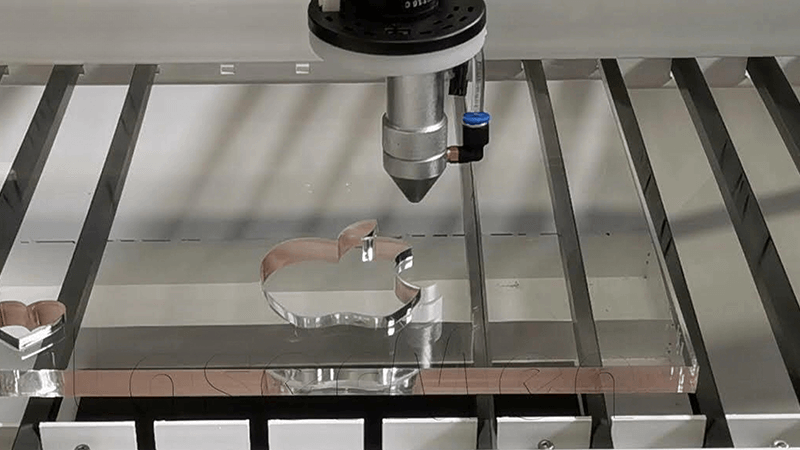
Do I need an enclosure for a laser engraver?
I choose enclosed CO2 engravers for production and for shared spaces. An enclosure locks down beam hazards, fumes, and noise. It also enables interlocks and fire suppression. Open-frame units can be fine for special cases, but they need strict PPE and local hoods.
I recommend an interlocked enclosure for most CO2 engraving. It protects eyes and lungs, improves capture, and supports auto safety systems. I only run open-frame units in controlled labs with PPE, shields, and strong local extraction.
Dive deeper
I think of enclosures as the foundation of layered safety. They make every other control more effective.
-
Beam containment12: A closed, opaque shell stops stray beams and diffuse reflections. The viewing window is rated. The lid seal prevents leakage. The interior is matte to reduce reflectance. I design our Kirin Laser enclosures with angled walls that diffuse scattered light.
-
Interlocks and logic[^13]: The enclosure allows simple, reliable interlock placement. I wire them to cut laser power, not just motion. I test for tamper resistance. I log interlock events in the machine controller so I can trace operator errors.
-
Fume capture13: Enclosures increase capture efficiency. Airflow becomes predictable. I can pull from a plenum and avoid bypass leaks. I place intakes at the rear and sides to draw across the cut zone. This reduces odor and keeps lenses clean.
-
Fire control14: The enclosure helps with flame detection and suppression. Sensors see flicker better in a controlled space. Agent discharge is more effective when the volume is defined. I integrate thermal sensors on the bed and a flame sensor near the nozzle. I program auto pause and agent release.
-
Noise and dust: Enclosures cut noise and stop ambient dust from entering. Clean interiors keep motion systems and optics healthy. Maintenance goes down. Accuracy stays stable.
-
When open-frame makes sense: I use open frames for oversize parts or field fixtures. Then I add beam shields, PPE, and local hoods with high static pressure. I also reduce power and speed during setup.
Here is my simple comparison:
| Feature | Enclosed | Open-frame |
|---|---|---|
| Beam safety | High | Low to medium |
| Fume capture | High | Low without strong hood |
| Interlocks | Yes | Hard to implement |
| Fire options | Built-in | External only |
| Flexibility | Medium | High |
I saw a reseller switch from open carts to enclosed CO2 units for school labs. Incidents fell to zero. Air quality improved. Training time dropped, because students could not bypass safety steps. The labs passed inspections on the first try.
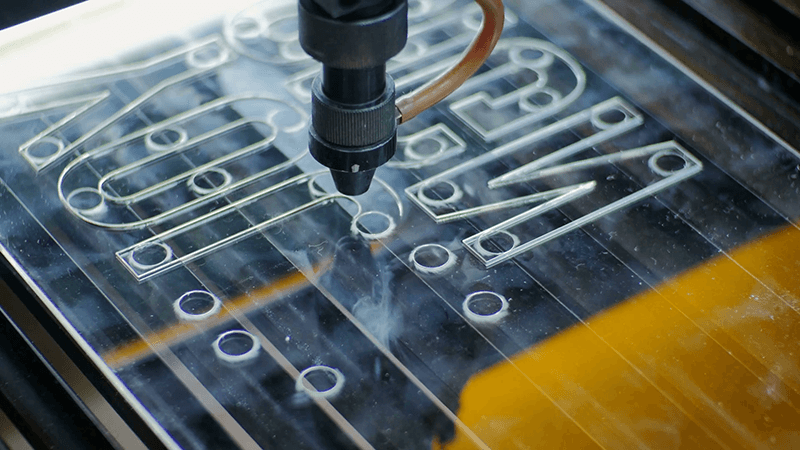
Conclusion
Laser engraving15 can be safe when I treat it like a controlled process. I use an enclosure, interlocks, and PPE. I run fume extraction with HEPA and carbon. I ban PVC. I tune air assist. I keep fire tools ready. At Kirin Laser, I build these controls into our CO2 machines and OEM lines, so my clients can scale with confidence and lower risk.
-
Understanding safety measures for CO2 lasers is crucial for preventing accidents and ensuring operator safety. ↩
-
Learn how these filters effectively remove harmful particles and gases, enhancing workplace safety. ↩
-
Explore the importance of these safety devices in preventing fires and protecting equipment. ↩
-
Discover how automatic fire suppression systems can save lives and property by quickly extinguishing fires. ↩
-
Explore this link to understand how enclosed viewing enhances safety and minimizes risks in laser operations. ↩
-
Learn about the critical role of interlocks in ensuring operational safety and preventing accidents in machinery. ↩
-
This resource will provide insights into airflow calculations, ensuring optimal performance and efficiency in your ventilation systems. ↩
-
Explore this link to understand advanced filtration techniques that enhance air quality and safety in various environments. ↩
-
Understanding the health effects of MMA is crucial for safe handling and exposure management in acrylic processing. ↩
-
Learn how to effectively monitor carbon saturation to maintain optimal air quality and filtration efficiency. ↩
-
Discover strategies to reduce fume path exposure, ensuring a safer working environment for operators. ↩
-
Interlocks and logic systems are key to preventing accidents. Explore how they work to improve safety in laser applications. ↩
-
Fume capture is vital for maintaining air quality in laser environments. Discover effective strategies and technologies for better fume management. ↩
-
Fire control is essential for safety in laser operations. Learn about the best practices and technologies to enhance fire safety in enclosures. ↩
-
Find the best laser engraving machine and laser engraving solutions from Kirin Laser, clicking this link to get all your needs for your needs. ↩





